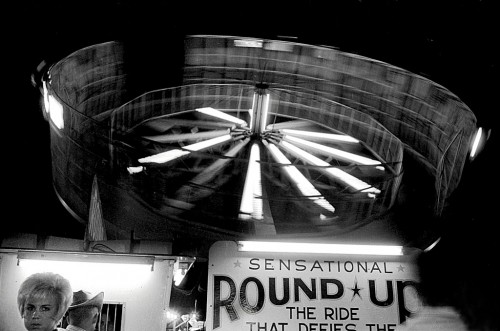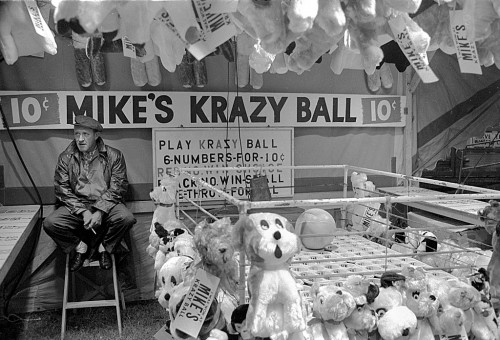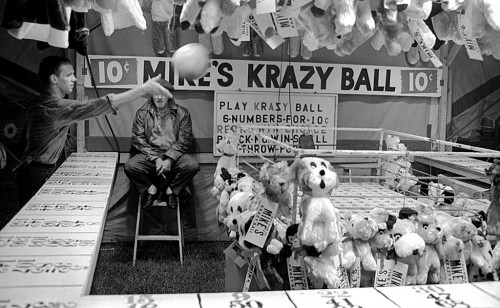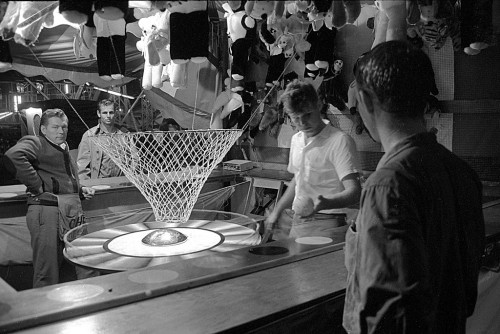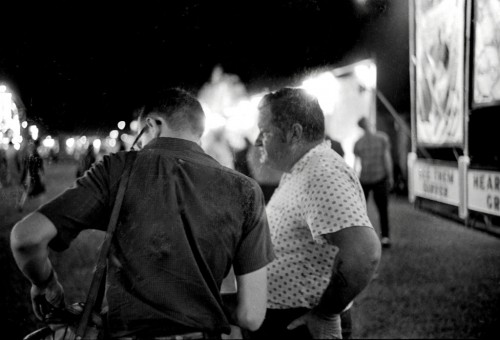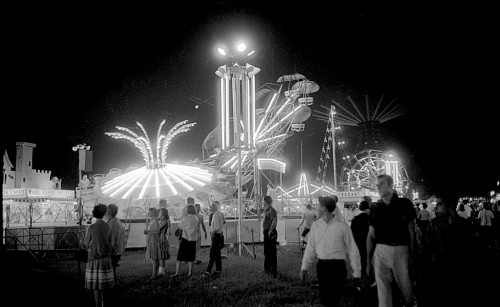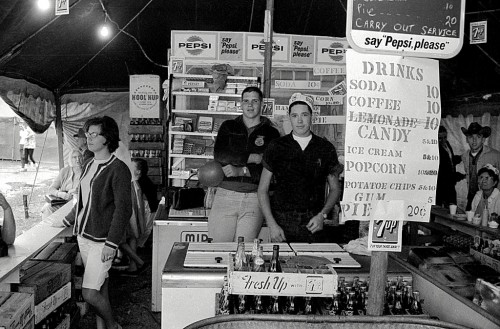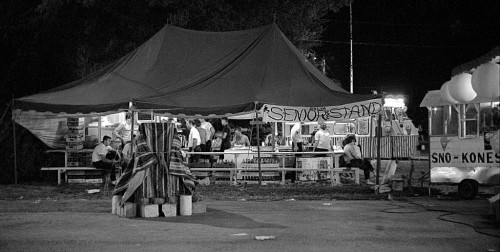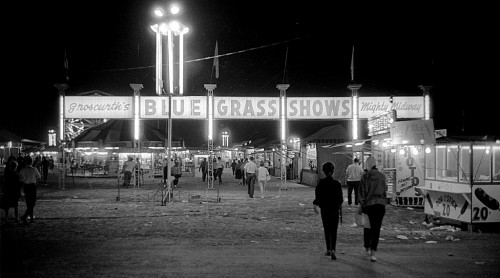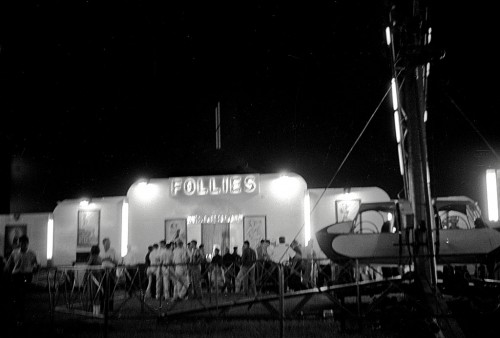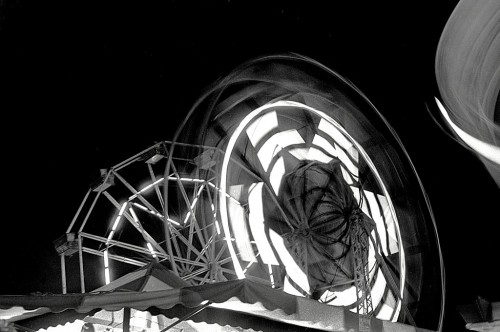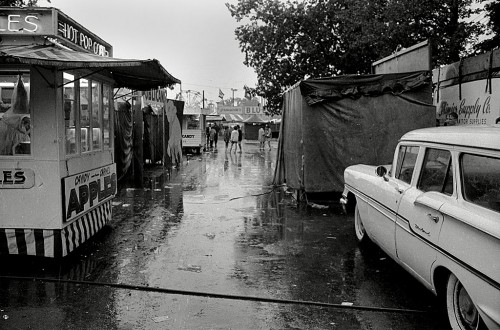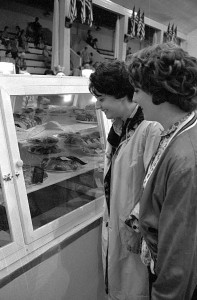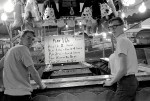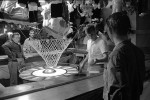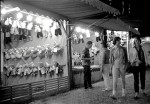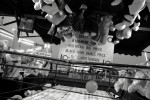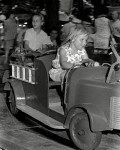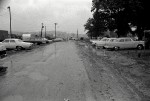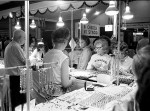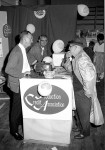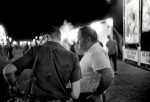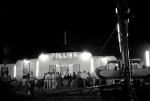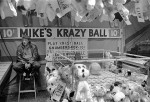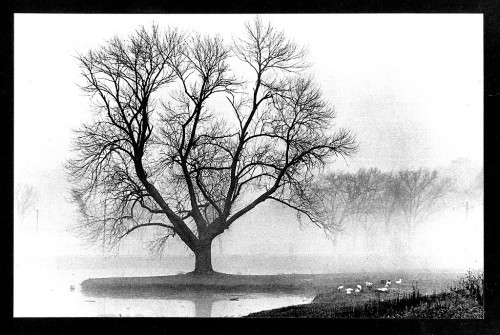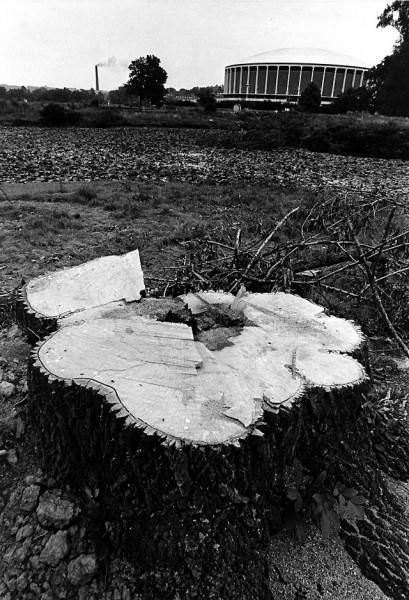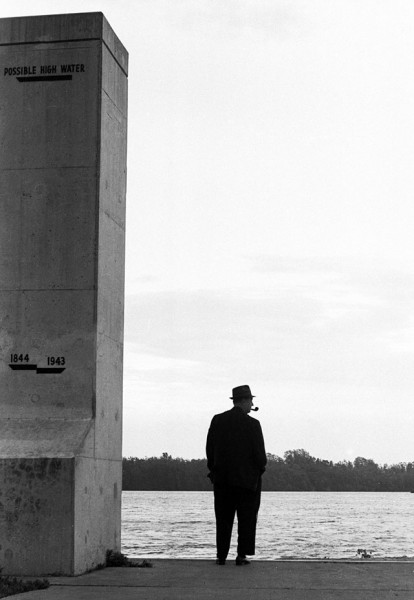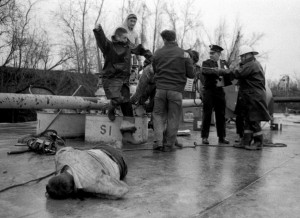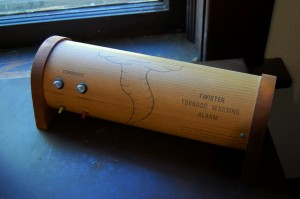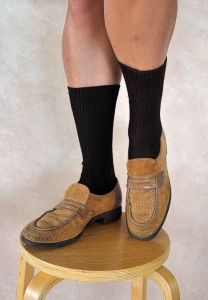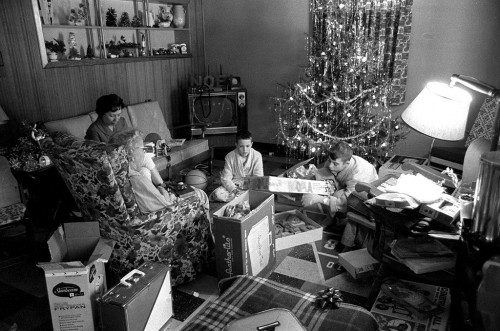 Christmas was always a big deal at our house, as the 1966 photo above shows. The Christmas tree was always set up in the basement recreation room, as they were called in those days.
Christmas was always a big deal at our house, as the 1966 photo above shows. The Christmas tree was always set up in the basement recreation room, as they were called in those days.
When we boys got up, Dad and Mother (mostly Dad) would torture us by making us wait until everybody got ready to go downstairs. Grandmother, who moved slowly because of arthritis, was always the first to go down.
When I got into high school, and became the official photographic historian, I was given the go-ahead to go next.
Christmas 1969
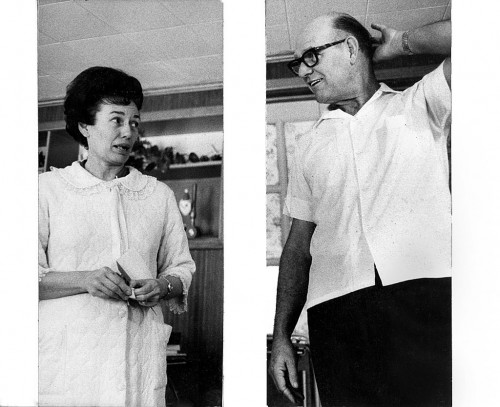 I had been doing some photo books for class projects at Ohio University, so Lila and I decided to put together one of our first Christmas as married folks in 1969. Here’s what it looked like.
I had been doing some photo books for class projects at Ohio University, so Lila and I decided to put together one of our first Christmas as married folks in 1969. Here’s what it looked like.
Each person generally got one big “special” present. They weren’t always under the tree. In fact, as we got older, Christmas morning turned out to be more like a scavenger hunt as we tracked down clues all over the house. Dad and Mother (mostly Dad) took great pleasure in watching us scurry.
Mother got a skillet
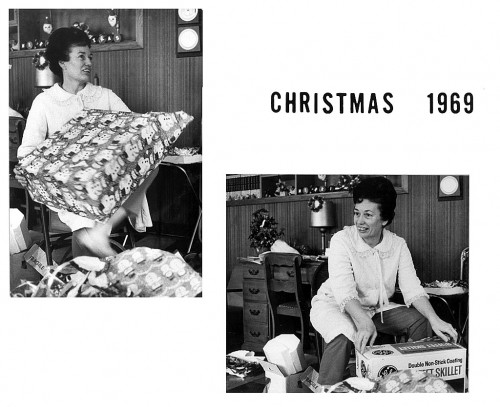 Mother would almost always get at least one utilitarian present. It might be a skillet like this, or a vacuum cleaner or a clothes dryer.
Mother would almost always get at least one utilitarian present. It might be a skillet like this, or a vacuum cleaner or a clothes dryer.
Then she’d get a “fun” gift
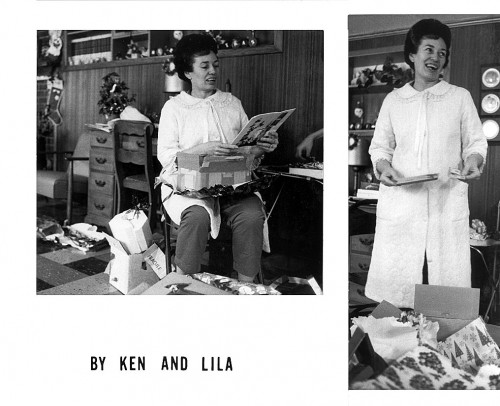 It might be a series of cards with clues as to what she should buy with the money enclosed or it might be an actual gift.
It might be a series of cards with clues as to what she should buy with the money enclosed or it might be an actual gift.
Boys got lots of small gifts
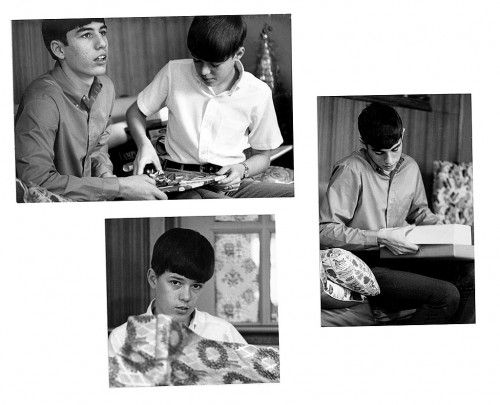 Dad loved to buy things. I think he started shopping for next Christmas on Dec. 26. We never did figure out were he squirreled away all the loot. In fact, sometimes, he’d forget what all he HAD bought. At the end of opening orgy, he’d look around, then disappear for a few minutes, returning with yet another box or two that he recognized were missing.
Dad loved to buy things. I think he started shopping for next Christmas on Dec. 26. We never did figure out were he squirreled away all the loot. In fact, sometimes, he’d forget what all he HAD bought. At the end of opening orgy, he’d look around, then disappear for a few minutes, returning with yet another box or two that he recognized were missing.
Grandmother liked “smell-good” stuff
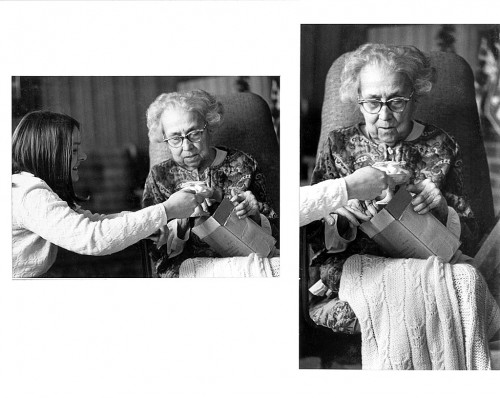 She’d get cosmetics, books, scarfs and knick-knacks.
She’d get cosmetics, books, scarfs and knick-knacks.
Dad lived for Christmas
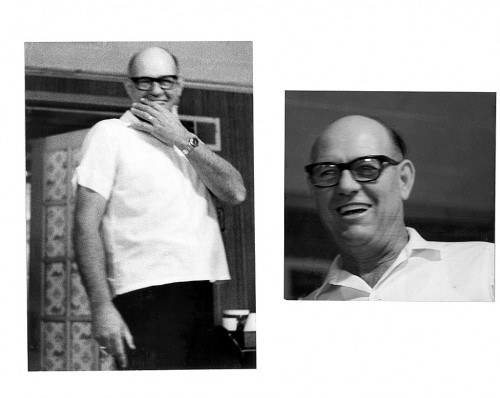 He loved to watch us tearing into the packages.
He loved to watch us tearing into the packages.
We were too busy to see this
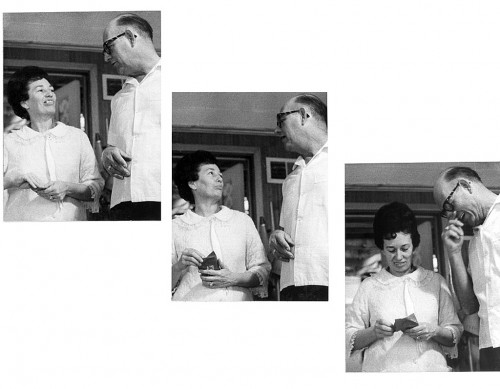 We kids were too busy ripping paper to watch the interplay between our parents. I don’t think I paid much attention to them until I shot this book.
We kids were too busy ripping paper to watch the interplay between our parents. I don’t think I paid much attention to them until I shot this book.
Dad got harder to buy for
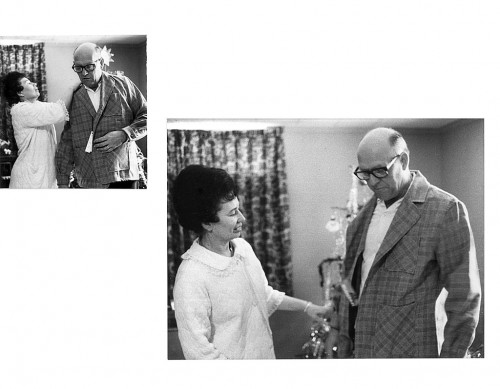 My junior or senior year in high school, Dad decided to quit smoking on New Year’s Eve without telling any of us. We didn’t know why he had gotten cranky for several weeks. He finally said that he threw all his cigarettes in the fireplace at the end of the year, but didn’t want to say anything until he was sure he had kicked the habit.
My junior or senior year in high school, Dad decided to quit smoking on New Year’s Eve without telling any of us. We didn’t know why he had gotten cranky for several weeks. He finally said that he threw all his cigarettes in the fireplace at the end of the year, but didn’t want to say anything until he was sure he had kicked the habit.
That complicated our gift-giving, though. That ruled out pipes, tobacco, pipe stands, lighters and other smoking accessories.
Taking inventory
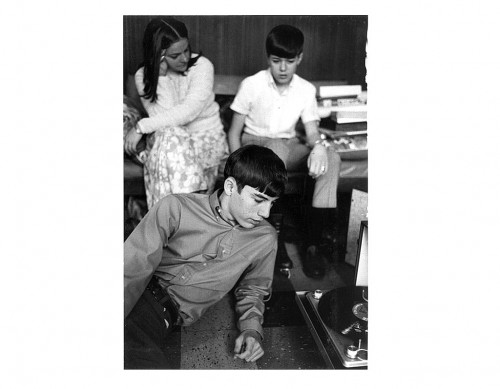 Once we had everything unwrapped, it was time to concentrate on that “special” gift. David must have gotten a turntable this year. I remember some of my big presents being a Hallicrafters S-38E shortwave radio (Son Matt has it now), a Daisy pump action BB gun, an Argus Autronic 35 (my first 35mm camera) and, a few years later, a Pentax camera.
Once we had everything unwrapped, it was time to concentrate on that “special” gift. David must have gotten a turntable this year. I remember some of my big presents being a Hallicrafters S-38E shortwave radio (Son Matt has it now), a Daisy pump action BB gun, an Argus Autronic 35 (my first 35mm camera) and, a few years later, a Pentax camera.
They proclaimed it a success
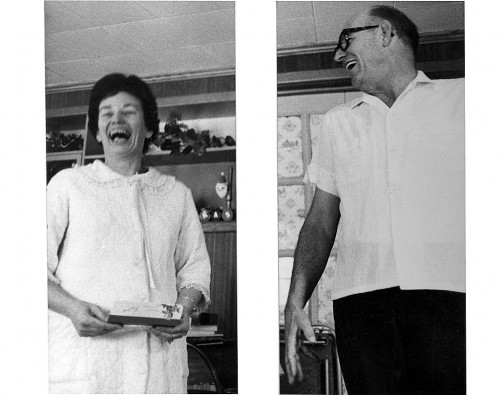 When it was all over, it’s obvious that they rated our morning a success.
When it was all over, it’s obvious that they rated our morning a success.
Biggest trash day of the year
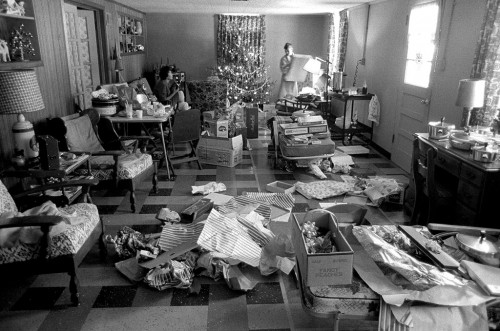 I read somewhere that the day after Christmas is the biggest trash day of the year. When I see all of the debris left over in 1966, I can believe it.
I read somewhere that the day after Christmas is the biggest trash day of the year. When I see all of the debris left over in 1966, I can believe it.
I should feel guilty about all of the stuff we got, but Grandson Malcolm is playing with some of the toys and Mother’s attic has a lot left for the next one.
I’m glad Lila and I put this together. It brings back a lot of good memories.

